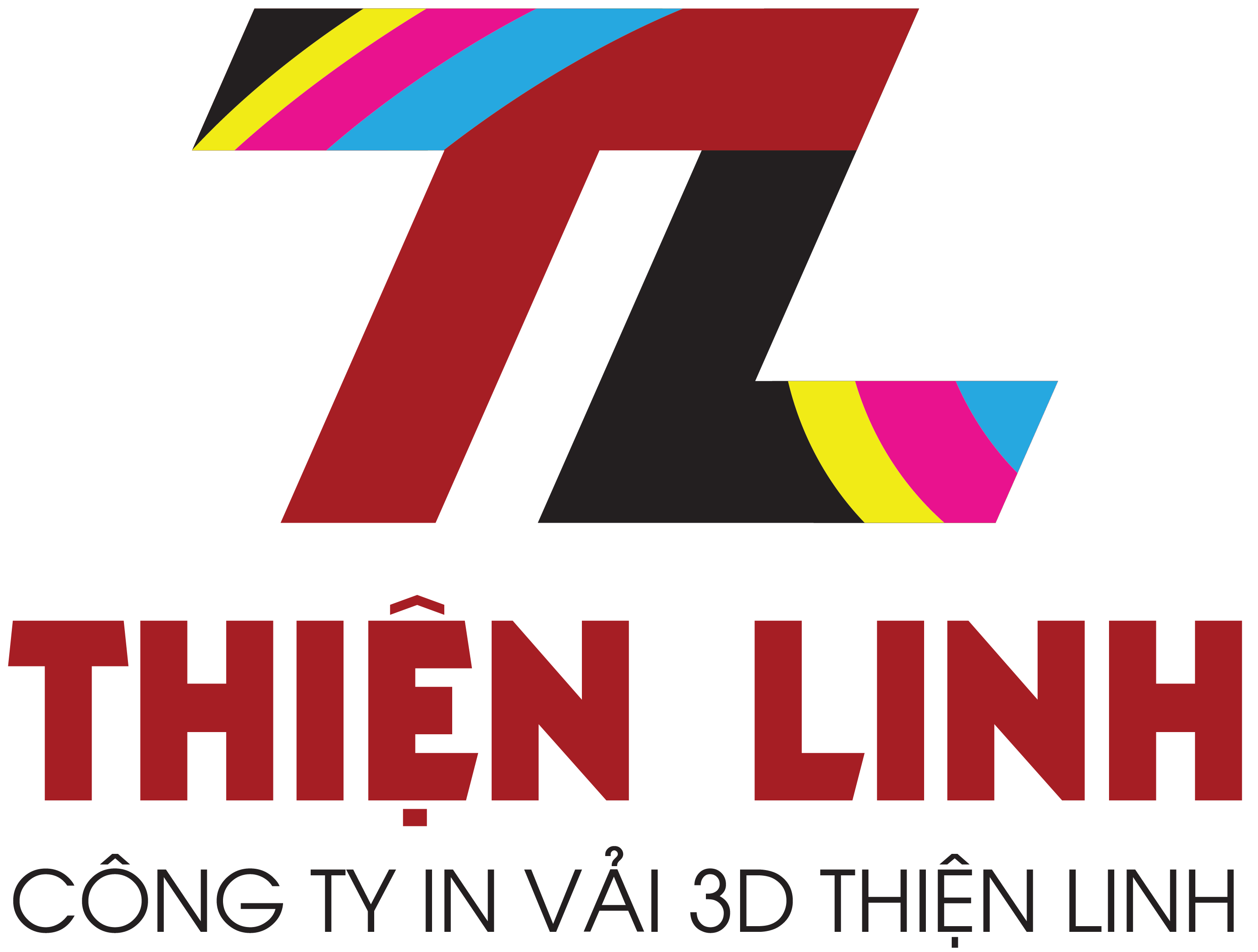Conversational AI vs Generative AI: Choosing the Right AI Strategy for Your Business
Top Differences Between Conversational AI vs Generative AI in ’24

Conversational AI is able to bring the capability of machines up to that of humans, allowing for natural language dialog between. Generative AI tools, on the other hand, are built for creating original output by learning from data patterns. So unlike conversational AI engines, their primary function is original content generation. There is little evidence that misinformation has a persuasive effect, but this type of content is more likely to reinforce existing partisan beliefs. Suppose we leverage the life review facets of generative AI to help in training therapists on doing life reviews. Or they might have gotten training a while ago and be rusty on the approach.
Indexing data involves turning the chunks into vectors, or large arrays of numbers the system uses to find the most relevant chunks for a given user query. You’re unlikely to perfectly remove all the content you don’t want while keeping everything you do. So you’ll need to err on the side of caution and let some bad data through or choose a stricter approach and cut some potentially useful content out. At Enterprise Bot, we built a custom low-code integration tool called Blitzico that solves this problem by letting us access content from virtually all platforms. For popular platforms like Coherence and Sharepoint, we have native connections, and for any others we can easily build Bitzico connectors using a graphical interface like the one shown below.
- Conversational AI is designed to cultivate natural conversations between machines and humans by producing text in response to questions and prompts.
- Several research groups have shown that smaller models trained on more domain-specific data can often outperform larger, general-purpose models.
- The capabilities of Generative AI have sparked excitement and innovation, transforming content creation, artistic expression, and simulation techniques in remarkable ways.
At a high level, generative models encode a simplified representation of their training data and draw from it to create a new work that’s similar, but not identical, to the original data. Generative AI refers to deep-learning models that can generate high-quality text, images, and other content based on the data they were trained on. Oracle’s partnership with Cohere has led to a new set of generative AI cloud service offerings. “This new
service protects the privacy of our enterprise customers’ training data, enabling those customers to safely
use their own private data to train their own private specialized large language models,” Ellison said. Mimicking this kind of interaction with artificial intelligence requires a combination of both machine learning and natural language processing.
The plugins expanded ChatGPT’s abilities, allowing it to assist with many more activities, such as planning a trip or finding a place to eat. These submissions include questions that violate someone’s rights, are offensive, are discriminatory, or involve illegal activities. The ChatGPT model can also challenge incorrect premises, answer follow-up questions, and even admit mistakes when you point them out.
Conversational AI vs. Generative AI: Core Differences
By leveraging these interconnected components, Conversational AI systems can process user requests, understand the context and intent behind them, and generate appropriate and meaningful responses. At the heart of Conversational AI, ML employs intricate algorithms to discern patterns from vast data sets. This continuous learning enhances the bot’s understanding and response mechanism.
Both generative and conversational AI technology enhance user experiences, perform specific tasks, and leverage natural language processing—and both play a huge role in the future of AI. With conversational AI, LLMs help construct systems that make AI capable of engaging in natural dialogue with people. A large language model may be employed to help generate responses and understand user inputs. A Dubai-based transportation/logistics provider, Aramex, was struggling to scale its digital customer service and widen its client base while keeping costs in control. That’s when Aramex discovered Sprinklr Service and its multilingual chatbots that could converse in 4 regional languages.
What Is Conversational AI?
Although
software programmers have been known to collaborate with ChatGPT, there are also plenty of specialized
code-generation tools, including Codex, codeStarter, Tabnine, PolyCoder, Cogram, and CodeT5. Bloomberg announced BloombergGPT, a chatbot trained roughly half on general data about the
world and half on either proprietary Bloomberg data or cleaned financial data. In R&D, generative AI can increase the speed and depth of market research during the initial phases of
product design. For example,
generative AI’s productivity benefits are unlikely to be realized without substantial worker retraining
efforts and, even so, will undoubtedly dislocate many from their current jobs. Consequently, government
policymakers around the world, and even some technology industry executives, are advocating for rapid
adoption of AI regulations. When responding to a question, it cites its sources, so users can see how it develops its responses and explore other sites for more context.
This level of personalization was previously unattainable, allowing marketers to connect with their audience on a deeper level. First, AI-powered tools can generate content, design elements, and even entire marketing campaigns in a fraction of the time it would take human marketers. This boost in efficiency allows teams to focus on strategy and creative direction while AI handles repetitive tasks and content creation at scale.
Contextualization of the active code enhances accuracy and natural workflow augmentation. GitHub Copilot, an AI tool powered by OpenAI Codex, revolutionizes code generation by suggesting code lines and complete functions in real time. Trained on vast repositories of open-source code, Copilot’s suggestions enhance error identification, security detection, and debugging. Its ability to generate accurate code from concise text prompts streamlines development.
In this article, we delve into the defining features of these advanced AI systems, explore their importance and applications, and shed light on the key differences that set generative AI apart from conversational AI. This website is using a security service to protect itself from online attacks. There are several actions that could trigger this block including submitting a certain word or phrase, a SQL command or malformed data. Chatbots like Siri, Alexa, and Google Assistant are designed for conversation-based tasks.
Given its potential to supercharge data analysis, generative AI is raising new ethical questions and
resurfacing older ones. Marketers can use this information alongside other
AI-generated insights to craft new, more-targeted ad campaigns. This reduces the time staff must spend
collecting demographic and buying behavior data and gives them more time to analyze results and brainstorm
new ideas.
Generative AI is a type of artificial intelligence (AI) that can produce creative and new content. Its aim is to create unique and realistic content that does not yet exist, based on what has been learned from different sources of training data. On the whole, Generative AI and Conversational AI are distinct technologies, each with its own unique strengths and limitations. It is important to acknowledge that these technologies cannot simply be interchanged, as their selection depends on specific needs and requirements.
But by combining the scalability of a survey with the opportunity for more flexible questions, surveys can now capture some of the benefits of focus groups. Surveys have been dominated by multiple-choice questions because they are easier to analyze and they focus responses very narrowly on what the survey creator wants to know. But the capabilities of GenAI allow survey writers to ask more open-ended questions. ” or “What shampoo have you tried before that you stopped using—and why did you stop?
Another scenario would be post-purchase or post-service chats where conversational interfaces gather feedback about the customer journey—experiences, preferences, or areas of dissatisfaction. Generative AI involves teaching a machine to create new content by emulating the processes of the human mind. The neural network, which simulates how we believe the brain functions, forms the foundation of popular generative AI techniques. Generative AI utilizes a training batch of data, which it subsequently employs to generate new data based on learned patterns and traits.
You can build your conversational interface using generative AI from data collection to result delivery. Use the foundation model that best fits your needs inside a private, secure computing environment with your choice of training data. Natural language processing (NLP) is a set of techniques and algorithms that allow machines to process, Chat GPT analyze, and understand human language. Human language has several features, like sarcasm, metaphors, sentence structure variations, and grammar and usage exceptions. Machine learning (ML) algorithms for NLP allow conversational AI models to continuously learn from vast textual data and recognize diverse linguistic patterns and nuances.
All in all, a therapist would try to ensure that your life review will be productive and supportive of your mental health. Your generative AI application, like a customer service chatbot, likely relies on some external data from a knowledge base of PDFs, web pages, images, or other sources. Choosing between a chatbot and conversational AI is an important decision that can impact your customer engagement and business efficiency.
Conversational AI vs Generative AI: Which is Best for CX? – CX Today
Conversational AI vs Generative AI: Which is Best for CX?.
Posted: Fri, 03 May 2024 07:00:00 GMT [source]
You can configure it to respond appropriately to different query types and not answer questions out of scope. Apart from content creation, you can use generative AI to improve digital image quality, edit videos, build manufacturing prototypes, and augment data with synthetic datasets. Conversational AI has several use cases in business processes and customer interactions. In the dynamic landscape of software development, staying ahead requires embracing innovation and maximizing productivity. A transformative trend that has gained significant traction is the integration of code generation tools.
They use conversational AI technology to understand and process each request. But this new image will not be pulled from its training data—it’ll be an original image INSPIRED from the dataset. Machine Learning is a sub-branch of Artificial Intelligence that involves training AI models on huge datasets.
The biggest perk of Gemini is that it has Google Search at its core and has the same feel as Google products. Therefore, if you are an avid Google user, Gemini might be the best AI chatbot for you. OpenAI once offered plugins for ChatGPT to connect to third-party applications and access real-time information on the web.
Additional
factors, such as powerful, high-performing models, unrivaled data security, and embedded AI services
demonstrate why Oracle’s AI offering is truly built for enterprises. Of course, it’s possible that the risks and limitations of generative AI will derail this steamroller. Among the dozens of music generators are AIVA, Soundful, Boomy, Amper, Dadabots, and MuseNet.
By interpreting the intent behind customer inquiries, voice AI can deliver more personalized and accurate responses, improving overall customer satisfaction. Generative AI is a subset of AI focused on creating new content, such as images, text, or music, by learning from existing data. In contrast, Machine Learning is a broader field that involves training models to make predictions or decisions based on data patterns, without necessarily generating new content. Generative AI systems are powerful because they are trained on extremely large datasets, which could potentially take advantage of nearly all the information on the internet. Today’s generative AI models produce content that often is indistinguishable from that created by humans.
Chatbots are merely a type of conversational AI and are limited to following specific rules or handling certain tasks and situations. Conversational AI still doesn’t understand everything, with language input being one of the bigger pain points. With voice inputs, dialects, accents and background noise can all affect an AI’s understanding and output.
AI developers are increasingly using supervised learning to shape our interactions with generative models and their powerful embedded representations. It’s important to note that generative AI is not a fundamentally different technology from traditional AI;
they exist at different points on a spectrum. Traditional AI systems usually perform a specific task, such
as detecting credit card fraud. This is partly
because generative AI tools are trained on larger and more diverse data sets than traditional AI.
As a rule of thumb, chatbots excel at handling simple, rule-based tasks, while conversational AI is better suited for more complex, personalized interactions. With a more nuanced understanding of these technologies, you can ensure you’re providing the best possible experience for your customers without overcomplicating your processes. Keep reading for a better understanding of the differences between chatbots and conversational AI.
Furthermore, it provided false positives 9% of the time, incorrectly identifying human-written work as AI-produced. Microsoft’s Copilot offers free image generation, also powered by DALL-E 3, in its chatbot. This is a great alternative if you don’t want to pay for ChatGPT Plus but want high-quality image outputs. You can foun additiona information about ai customer service and artificial intelligence and NLP. Lastly, there are ethical and privacy concerns regarding the information ChatGPT was trained on.
For example, e-commerce platforms may roll out bots that exclusively handle returns while others handle refunds. However, these models may soon be able to interpret hand gestures and images as well. Whenever a user asks the chatbot something, it scans the entire data set to produce appropriate answers. These chatbots use conversational AI NLP to understand what the user is looking for. Think about all the chatbots you interact with and the virtual assistants you use—all made possible with conversational AI.
Many companies look to chatbots as a way to offer more accessible online experiences to people, particularly those who use assistive technology. Commonly used features of conversational AI are text-to-speech dictation and language translation. Some companies use conversational AI to streamline their HR processes, automating everything from onboarding to employee training. generative vs conversational ai The healthcare industry has also adopted the use of chatbots in order to handle administrative tasks, giving human employees more time to actually handle the care of patients. Just as some companies have web designers or UX designers, Normandin’s company Waterfield Tech employs a team of conversation designers who are able to craft a dialogue according to a specific task.
In contrast, generative AI aims to create new and original content by learning from existing customer data. In one sense, it will only answer out-of-scope questions in new and original ways. Its response quality may not be what you expect, and it may not understand https://chat.openai.com/ customer intent like conversational AI. Conversational AI can be used to improve accessibility for customers with disabilities. It can also help customers with limited technical knowledge, different language backgrounds, or nontraditional use cases.
Machine Learning, on the other hand, is widely used in applications like predictive analytics, recommendation systems, and classification tasks. As these fields continue to evolve at a rapid pace, we can expect to see even more exciting developments and applications in the coming years. The key to learn generative AI and machine learning lies in understanding their unique characteristics, staying informed about new advancements, and carefully considering the ethical implications of their deployment. With the latest update, all users, including those on the free plan, can access the GPT Store and find 3 million customized ChatGPT chatbots. Unfortunately, there is also a lot of spam in the GPT store, so be careful which ones you use. Since there is no guarantee that ChatGPT’s outputs are entirely original, the chatbot may regurgitate someone else’s work in your answer, which is considered plagiarism.
Also, the life review can meander if that’s what you want to do or be tightly structured if that’s what you prefer instead. Generative AI is available 24×7 and accessed about anywhere, so you can do the life review at your time preference and from nearly any location. Fortunately, there are rigorous research studies that have been reexamining life reviews in light of widening the scope of those who undertake such therapy. A hallmark of such empirical studies is to perform an RCT (randomized controlled experiment). One difficulty is that people tend to not want to admit to issues they have. Of course, the problem is going to be that only you are going to hear the answers.
How Generative AI Content Could Influence the U.S. Election
Oracle has partnered with AI developer Cohere to help
businesses build internal models fine-tuned with private corporate data, in a move that aims to spread the
use of specialized company-specific generative AI tools. Such a specialized generative AI model can respond by
synthesizing information from the entire corporate knowledge base with astonishing speed. So, with many organizations already experimenting with generative AI, its impact on
business and society is likely to be colossal—and will happen stupendously fast. These generative AI tools can produce text-based responses to address customer inquiries and hold conversations with customers. For instance, when it comes to customer service and call centers, human agents can cost quite a bit of money to employ.
Make sure to download OpenAI’s app, as many copycat fake apps are listed on Apple’s App Store and the Google Play Store that are not affiliated with OpenAI. For example, my favorite use of ChatGPT is for help creating basic lists for chores, such as packing and grocery shopping, and to-do lists that make my daily life more productive. Our goal is to deliver the most accurate information and the most knowledgeable advice possible in order to help you make smarter buying decisions on tech gear and a wide array of products and services. Our editors thoroughly review and fact-check every article to ensure that our content meets the highest standards.
Both conversational and generative AI represent next-generation solutions for operational efficiency, scalability, innovation, and customer experience improvements. While conversational AI functions as a specific application of generative AI, generative AI is not focused on having conversations, but content creation. For example, with generative AI, LLMs are used to process and generate human-like text. They’re employed specifically for text-based tasks—like writing, summarizing, and translating.
When building generative AI systems, the flashy aspects often get the focus, like using the latest GPT model. But the more “boring” underlying components have a greater impact on the overall results of a system. He guides editorial teams consisting of writers across the US to help them become more skilled and diverse writers. This flexibility and scale means that surveys can now approach the effectiveness of a focus group. Surveys are generally a good balance of cost and scale to gather data, but the gold standard has historically been the focus group. However, focus groups are very expensive, and the in-person nature of them can both limit scale and bias the outcomes.
Instead of customers feeling as though they are speaking to a machine, conversational AI can allow for a natural flow of conversation, where specific prompts do not have to be used to get a response. Rather than storing predefined responses, the conversational AI models are able to offer human-like interactions that utilize deep understanding. While each technology has its own application and function, they are not mutually exclusive.
- It is more along the lines of stirring the pot and getting the mental juices reinvigorated.
- With its smaller and more focused dataset, conversational AI is better equipped to handle specific customer requests.
- The focus of Generative AI is on high-quality, creative content generation, and the training complexity is relatively high, often involving unsupervised learning and fine-tuning techniques.
- The key is that sometimes a particular prompt will work in one generative AI app and not another.
- While AI is unlikely to supplant human creativity and strategic thinking completely, it may lead to a shift in required skills and potentially fewer entry-level positions in the field.
Beyond mere pattern recognition, data mining extracts valuable insights from conversational data. For instance, by analyzing customer behaviors, AI can segment customers, enabling businesses to tailor their marketing strategies. But what’s the real essence behind the terms “conversational” and “generative”? In this blog, we’ll answer these questions and provide you with easy to understand examples of how your enterprise can leverage these technologies to stay ahead of the competition. Though both can be used independently, combining the power of both types of AI can be greatly beneficial for a customer experience strategy.
On the flip side, there’s a continued interest in the emergent capabilities that arise when a model reaches a certain size. It’s not just the model’s architecture that causes these skills to emerge but its scale. Examples include glimmers of logical reasoning and the ability to follow instructions. Some labs continue to train ever larger models chasing these emergent capabilities.
You can configure most aspects of the extraction step, including specifying how to handle headers, images, and links. Properly parsed data allows generated responses to include specific references, for example, “See table 3 on page 12 of our pricing-2024.pdf document for more information on current pricing for this specific plan.” LLMs also don’t know about niche topics that weren’t included in their training data or weren’t given much emphasis. Need help with specific tax laws or details about your personalized health insurance policy? Third, and perhaps most importantly, generative AI doesn’t just mimic human creativity.















